Assam
Assam
Assam is geographically the second largest and also the most populated state in the northeast of India. The state has the largest population of one-horned Rhinos in the world; apart from other large mammals such as the Elephants and Rhinos. The largest riverine Island in the world, Majuli, is also located in Assam. Guwahati, the main city, is the de facto capital, though technically the capital is Dispur, a continuation of Guwahati city. Guwahati is also famous for the Hindu temple of Kamakhya.
It shares its border with Bhutan and Arunachal Pradesh in the North, with Nagaland and Manipur to the east, with West Bengal to the West and with Tripura, Manipur, Mizoram, and Bangladesh in the South. Set amidst the famous river valleys like Brahmaputra and Barak, Assam is one of the most picturesque states in our country. Some world-famous National parks, majestic islands, very important temples for religious tourists, beautiful hill stations, and eye-catching tea plantations, all make the state a traveller’s paradise. Tourism and Tea both have made Assam very famous. Guwahati is the most important city in Assam.
A Brief History
Scholars, researchers, and historians believe that the history and origin of Assam have mythological roots. The evidence of human settlement was found here dating back to the Stone Age. In the epics such as Mahabharata, the mention of this area can be found. The Kalika Puran stated that the earliest ruler of Assam belonged to the Danava dynasty. Then the Naraka dynasty was established by Naraka.
Naraka’s son Bhagadatta’s name can be found in Mahabharata as he fought for the Pandavas. Assam was originally called Pragjyotishpur or Kamarupa. During the time of the mighty Gupta Empire, the Kamarupa kingdom was one of the important kingdoms of the empire. The Central Assam at that time was ruled by the Davaka Kingdom which was later taken over by the Kamarupa kingdom and they ruled over a huge area. It is said that the historical account of Assam begins during the early 4th century when Pushya Varman established the Varman dynasty. Then subsequent dynasties of the Kamarupa kingdom continued to rule Assam. The Kamarup Kingdom ultimately came to an end during the 12th century AD.
During the Medieval period, a kingdom emerged which was called the Ahom Kingdom. The advent of Ahoms in the eastern hills during 1228ad was the turning point of Assam’s history. They ruled for six centuries and gradually they ruled over a large territory overtaking all other small kingdoms like Chutiya or Kachari. Their rule witnessed development on all fronts including the cultural aspects also. They successfully prevented all invasions. Ultimately the state witnessed the collapse of this dynasty and the Burmese invaded Assam. Finally, through signing the treaty of Yandabu in 1826, the control of Assam came under the British East India Company. After the independence of India, Gopinath Bordoloi became the first chief minister of Assam.
Division of the state
After independence, the State of Assam was divided into several smaller states. In 1963 the Naga hill districts became a separate state with the name of Nagaland. Meghalaya was formed in 1972. Arunachal and Mizoram were separated as union territories and gradually became states in 1987.
The state capital
Guwahati
Guwahati is the largest city in North East and it is the most important gateway of north-eastern India. Situated on the banks of the river Brahmaputra the age-old city symbolizes the true spirit of the land. The city is famous for the Kamakhya Temple, one of the holiest temples in the country. Apart from this Umananda and Navagraha temples are the prime attraction. One can visit Assam State Museum which displays a wide collection of tribal life and culture. Guwahati also has a zoo which is the largest in northeast India.

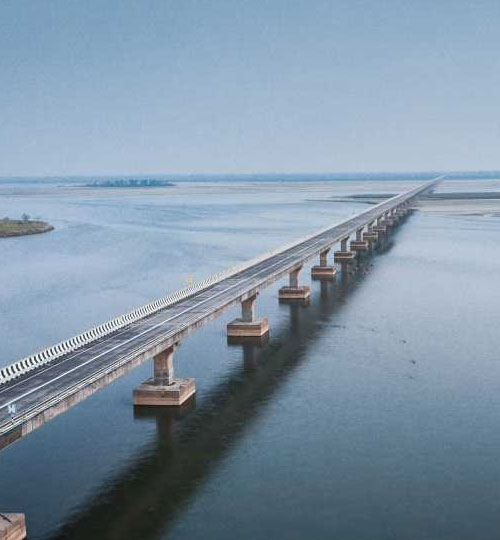
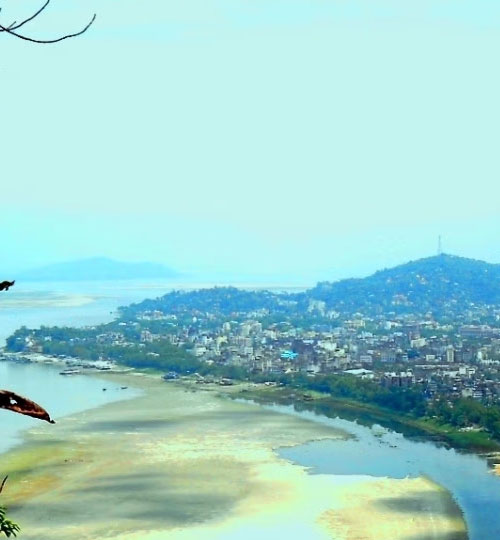
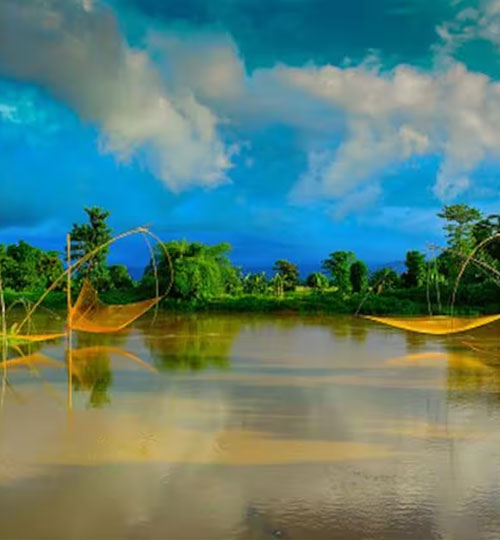
The Rhino land
Kaziranga
One of the most desired wildlife destinations in India, Kaziranga is the home of almost two-thirds of the population of Great One Horned Rhinoceros in the world. The national park has done a tremendous job to protect and conserve these endangered species. In the year 1985, it was declared a World Heritage Site by UNESCO. It has also earned a reputation for the conservation of the tigers. The park lies in the two districts of Golaghat and Nagaon district and is also famous for its scenic beauty. One of the major reasons is the presence of the holy Brahmaputra River. The park hosts a diverse range of wild animals; it is also a bird lover’s paradise.
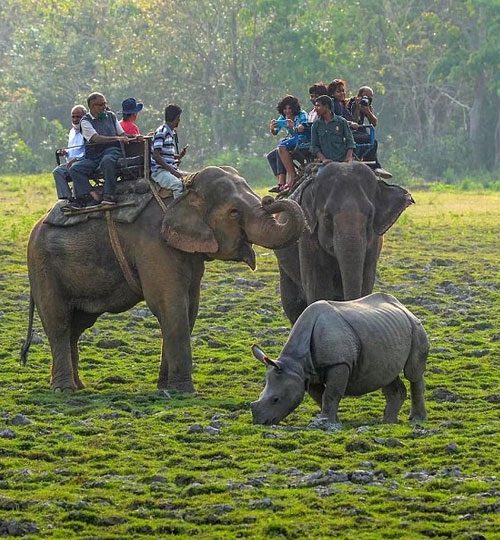
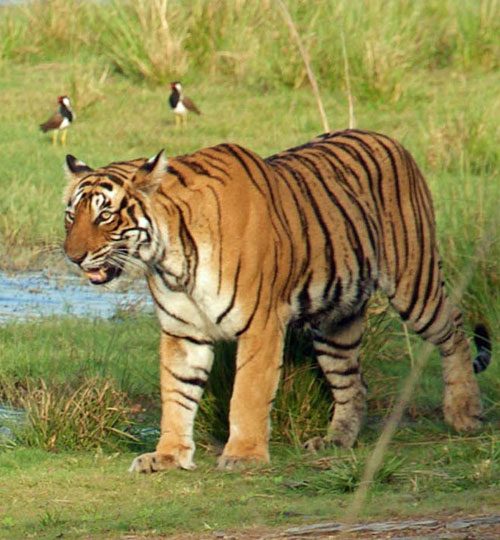
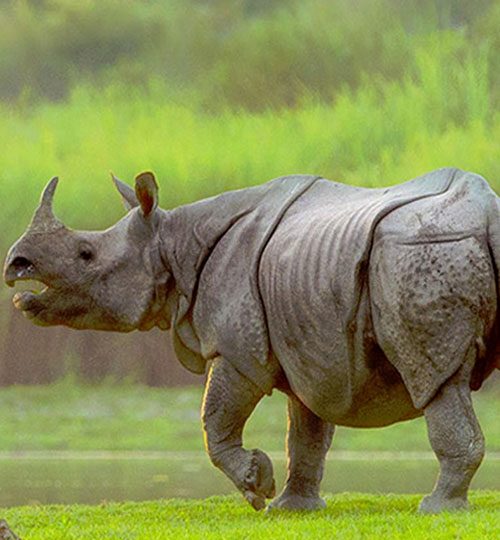
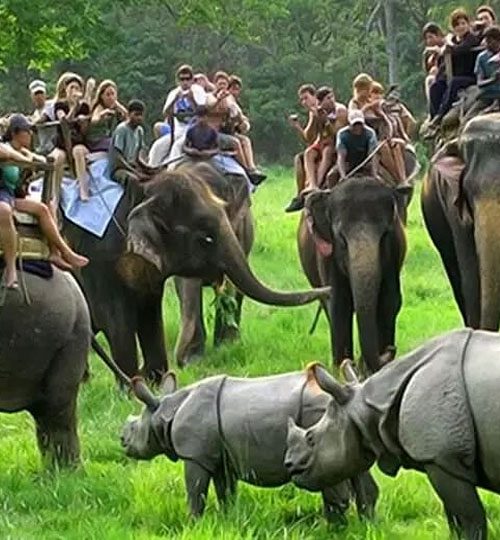
Vaishnava Culture
Majuli
It is the biggest river island in the world located on the Brahmaputra River. The island offers unparalleled scenic beauty. The island has been considered one of the most important cultural hubs of the state. The ravishing beauty blended with cultural heritage has increased its attraction. Majuli is the epicentre of the neo-Vaishnava philosophy. There are several Vaishnava Satras or monasteries on the island which draws tourists here.
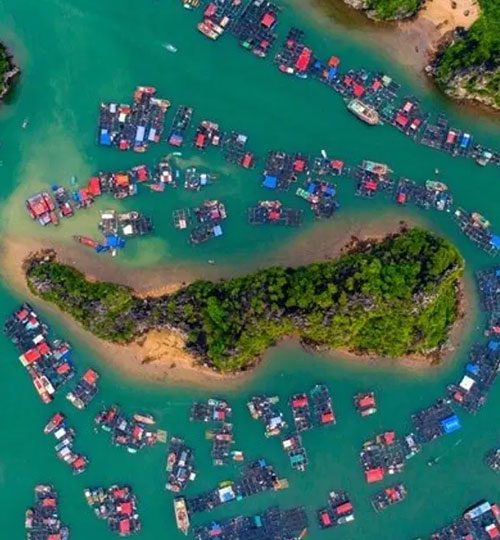
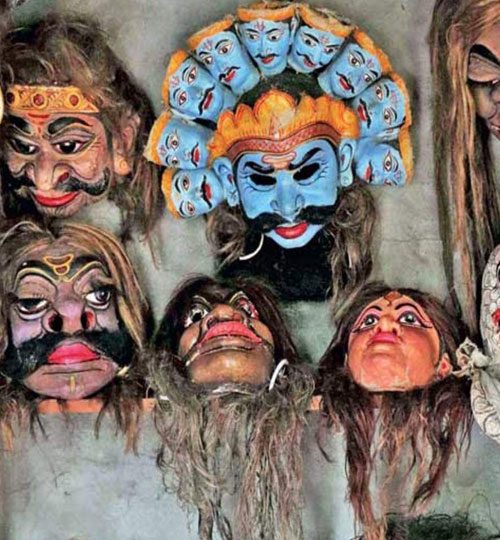
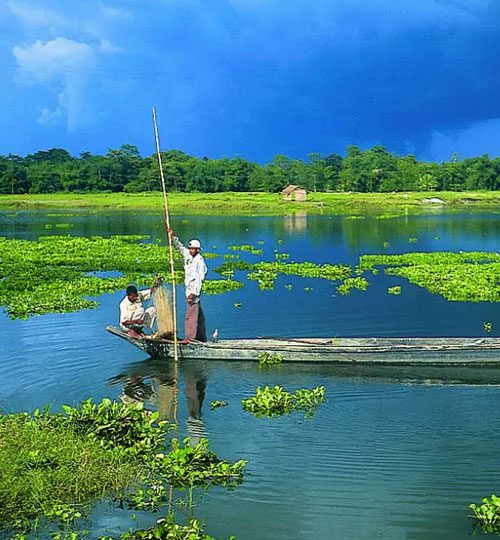
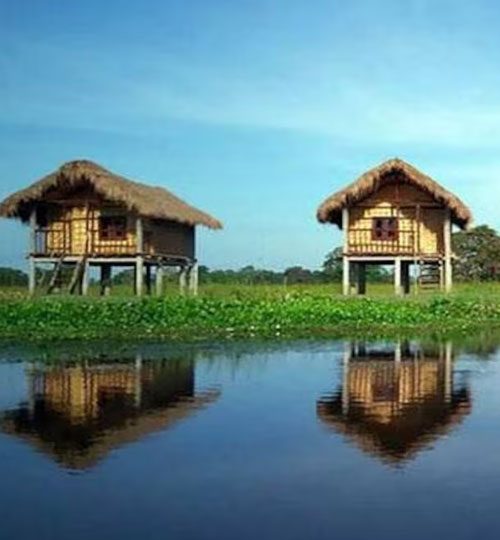
Other Destinations
Manas National Park
Another world-famous National park in Assam is the Manas National Park. It is also a UNESCO World Heritage site. It is a tiger and elephant reserve and also a biosphere reserve. This park has derived its name from the Manas River which passes through this park. The park is home to several species of animals such as Indian Tigers, Indian Elephants, Gaurs, leopards, Indian Rhinoceros, Hog and Barking deer, Dholes, Chital etc. It also hosts more than 400 species of birds.
Haflong
One of the most beautiful hill stations in Assam as well as the northeast. It is a combination of picturesque valleys and lush green hills. Haflong Lake is one of the prime attractions here. Set amidst an abundance of natural beauty it attracts tourists from across the country. Haflong is ideal for those looking for tranquillity and pure natural beauty.
Jorhat
One of the important cities in Assam. It is regarded as the tea capital of the world. The tea plantations around here attract a large number of tourists. It is also the gateway to Majuli Island. Apart from visiting several famous tea estates and research centres, Places like Gibbon Wildlife Sanctuary, Kakochange waterfall, Lachit Barphukan’s Maidan etc are places which attract tourists here.
Diphu
Another secluded hill station in Assam. It is 270 km from Guwahati. It is famous for its unspoiled natural beauty. This place is ideal for trekking as well. Diphu has some famous temples of the region such as Deopani Durga Mandir and a Shiva temple.
People and Culture
Assam has a rich history and it is also a state where different ethnic groups and communities stay. The plane lands of Brahmaputra and Barak valleys mainly consist of people of Indo-Iranian Ancestry. This is a Multiethnic, Multi-linguistic and multi-religious society. The Ahom people originally stem from the Yunnan province of Southern China. It is just an example that explains the wide mix of ethnic and linguistic people here. Bodo Kachari is the historically dominant group in Assam. Then the Ahoms emerged, and the Ahom group along with upper Assam Bodo Kachari groups like Chutiyas were associated with the term Assamese. Assamese and Bodo are the official and major languages here. Also, Bengali is the official language of the three districts in the Barak Valley. In this region of Barak Sylheti is the most spoken indigenous language. As far as religion is concerned Hindus are the majority and Muslims are also substantial here. Other religions like Jainism, Buddhism, and Sikhism are also found here. Christianity is found among the scheduled tribe population.
The people of Assam celebrate many festivals. Apart from Durga Puja and Eid which are celebrated here with great zeal and devotion, Bihu remains the most important festival in Assam. It is a non-religious festival. Three Bihu festivals are celebrated beyond the boundaries of caste creed or religion. The Bohag Bihu is celebrated in mid-April which marks the commencement of a new year. It is also known as Rangoli Bihu. It typifies fun and frolic. Then there is Magh Bihu which is known as Bhogali Bihu. It is a harvest festival and symbolizes feasting and merrymaking. It happens in mid-January. The other Bihu is Kati Bihu which is known as Kangali Bihu, it takes place in mid-October.
Climate
The Annual rainfall in Assam is not only the highest in the country but one of the highest in the world. June to Sep is Monsoon and because of heavy rainfall often the state is affected by flooding. November to February is winter and April May and August is the hottest season.
Getting there
Guwahati is the main entry point which is well connected through railway with other parts of the country and it also houses the major airport of the state.
